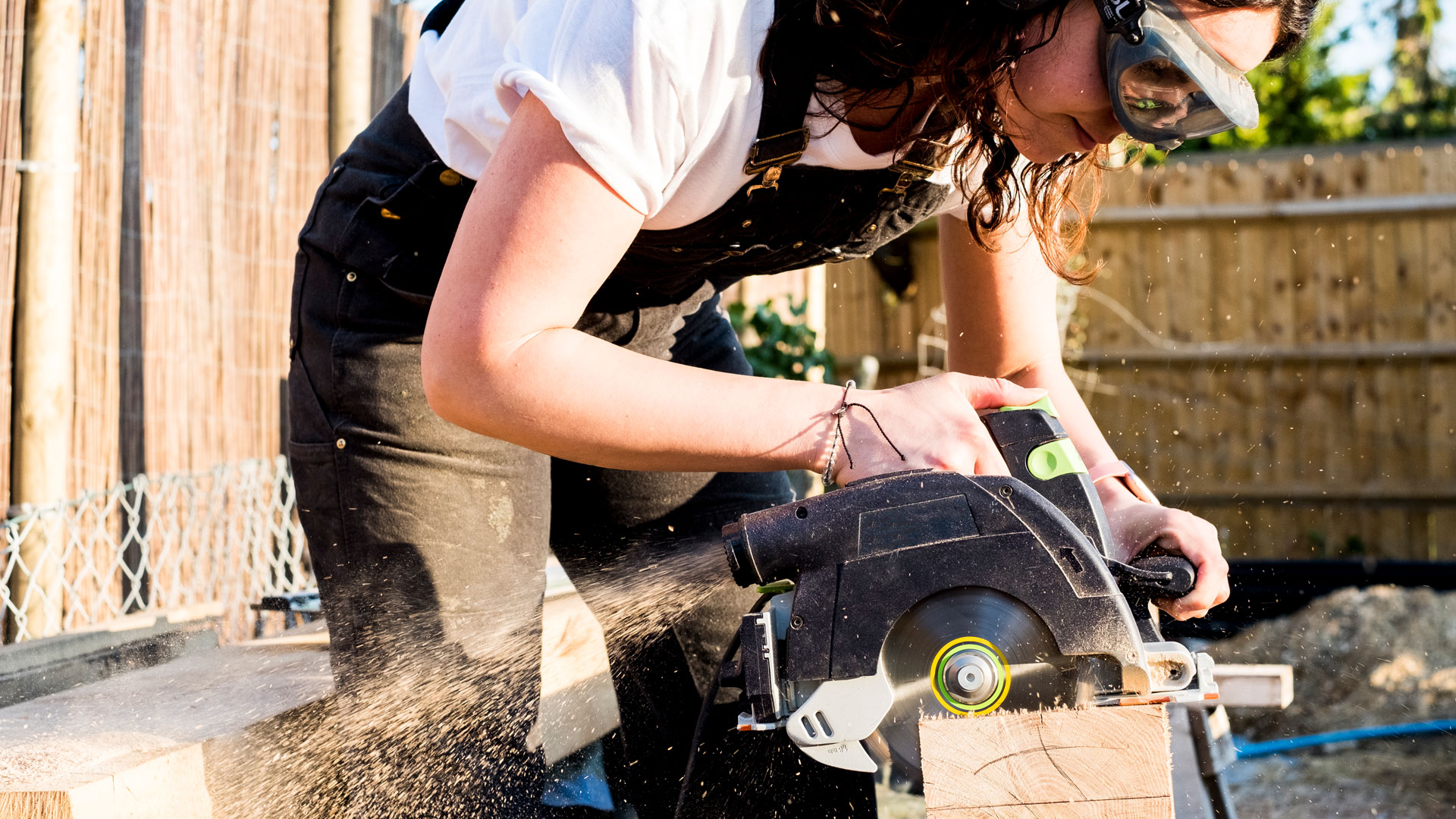Whether it’s for trade or domestic use, the best circular saws have a place in every tool kit. These power tools use round blades with sharp teeth to make quick cuts in materials like wood, plywood, and even metal. To help you find the best circular saws, we’ve included a number of top-rated options from brands like Dewalt, Makita, and Black & Decker.
The best circular saws come at different price tags. The cheap circular saws come with fewer features than you might need if you have a lengthy or particularly intricate design to cut. But that’s not to say they won’t do a good job at cutting through hard materials. The cheaper circular saws are perfect for tackling DIY jobs around the house. Whilst the more expensive circular saws are heavy duty. Many of the more expensive circular saws also come with more power.
You can choose from corded or battery-operated circular saws. The best corded circular saws give you unlimited battery time, whilst battery-operated circular saws are ideal for when you are working on a site where there is no power. Nowadays battery-powered options can be just as powerful as their corded circular saw counterparts, but for sustained power, corded circular saws come up trumps.
Wondering what other features to look out for when picking the best circular saw? Be sure to look at the overall weight of the power tool, and its speed – which is measured in revolutions per minute (RPM). Want to upgrade your other power tools? Check out our guide to the best cordless drills.
1. Dewalt DWE575 Circular Saw: Best circular saw overall
Why you can trust Top Ten Reviews Our expert reviewers spend hours testing and comparing products and services so you can choose the best for you. Find out more about how we test.
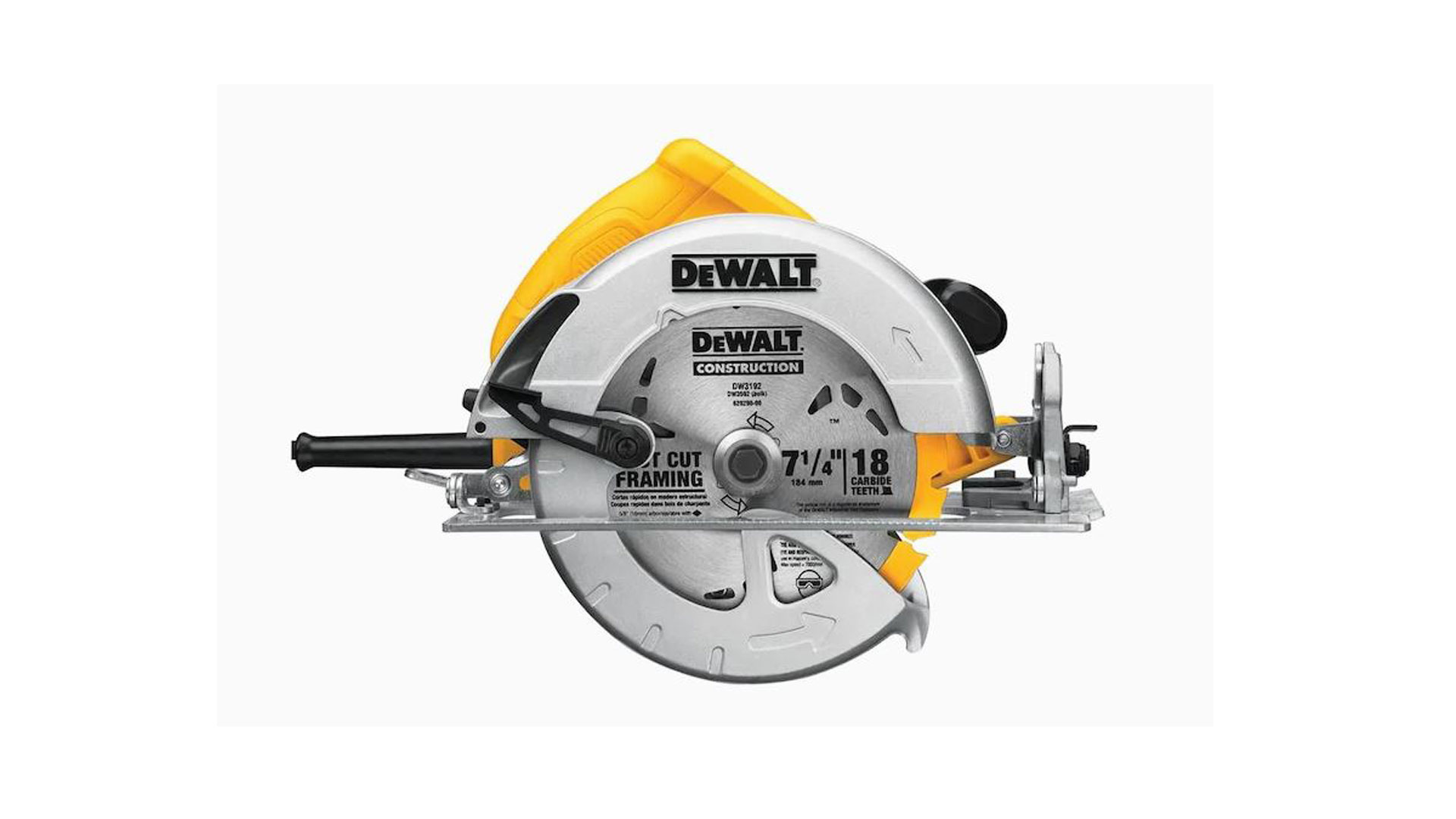
The Dewalt DWE575 is a versatile circular saw and is a nice upgrade to Dewalt’s previous popular circular saw models. With the Dewalt DWE575, you get an increase in the bevel degree capacity and the design is more refined - all within a reasonable price range too! While it might be double the price of the real budget models, it offers enough features to rival pricier models for a place in a professional tool kit.
With a powerful 15 amp motor, durable power cord, and ergonomic design, a lot of thought has been put into making the Dewalt DWE575 circular saw suitable for long and heavy duty jobs. At a weight of just 8.8 pounds and with features like an integrated dust blower, it’s also a real pleasure to use. It also has a decent three-year warranty that will help ensure you get the most out of this saw.
- Read our full Dewalt DWE575 Circular Saw review
2. Makita 5007MG Circular Saw: Best circular saw for professionals
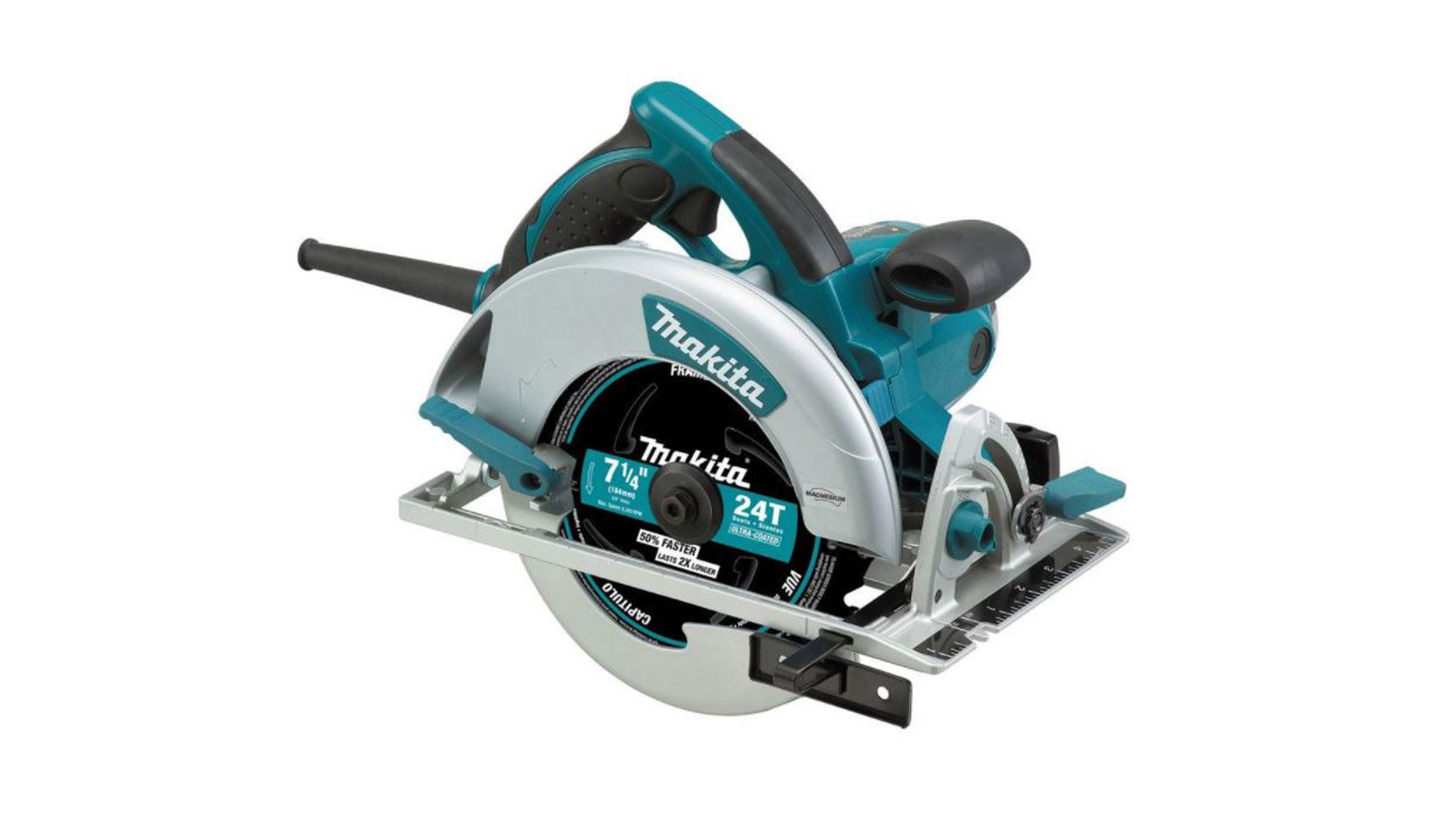
The Makita 5007MG may be the priciest model on the list, but it also has the most expansive list of professional features too. From highly durable magnesium components to a powerful 15 amp industrial motor, this circular saw creates clean cuts while also being lightweight enough to prevent aching wrists on long jobs. It has features you’ll often find on other saws, like a built-in dust blower, as well as nice-to-haves like built-in LED lights to illuminate the line of cut.
The Makita 5007MG circular saw also comes with one of the best blades, a 7 1/4 inch Premium Ultra-Coated Framing Blade complete with carbide tips, so it can power through even nail-embedded wood with ease. Between the high-end blade and powerful motor, the Makita 5007MG can easily tackle a wide range of work, whether it involves dense structural panels or framing walls, floors, and roofs in a range of dimensional lumber.
- Read our full Makita 5007MG Circular Saw review
3. Milwaukee 6390-21 Circular Saw: Best circular saw warranty
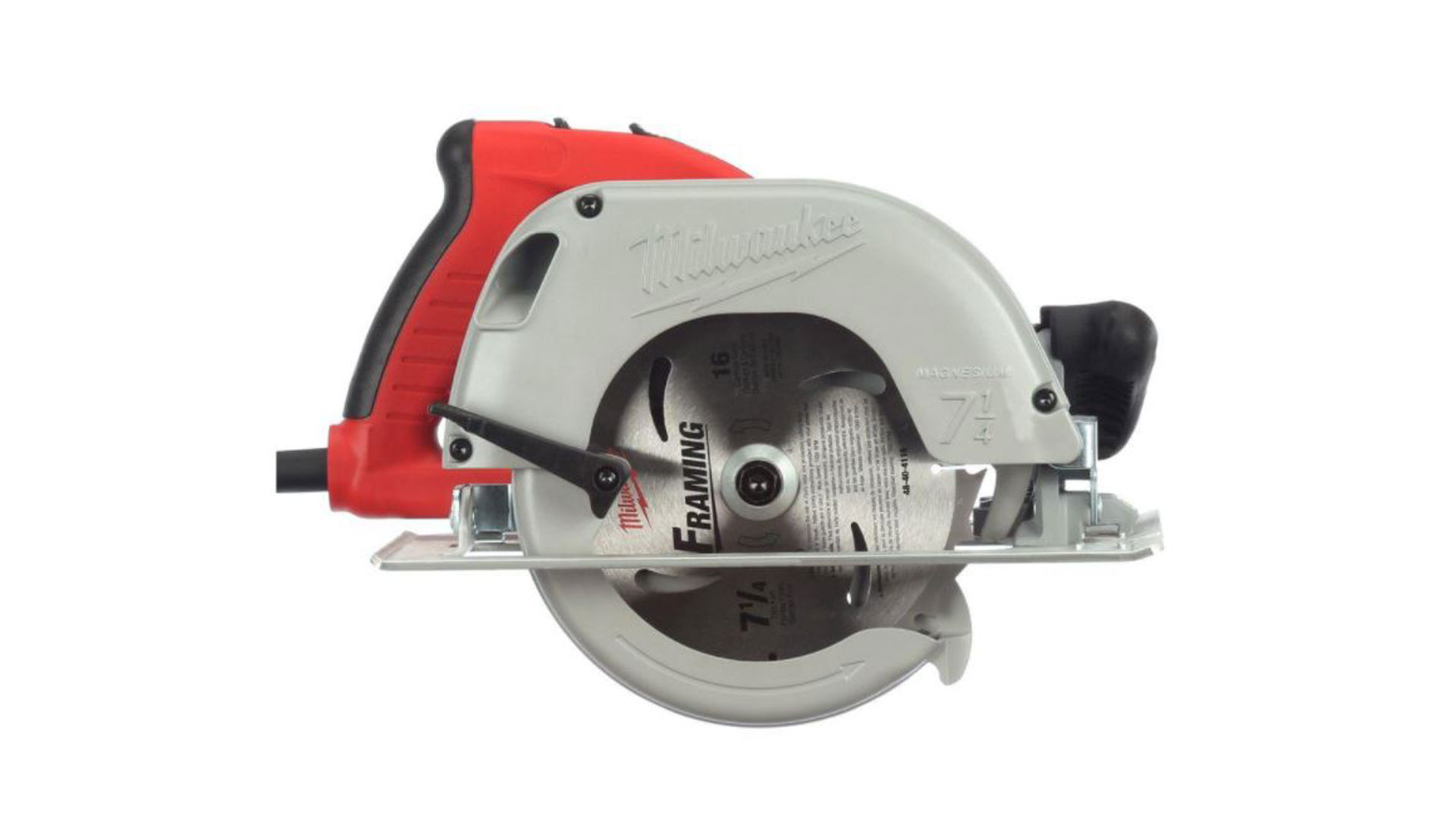
The Milwaukee 6390-21 was a rival for the best professional circular saw category, but it was just pipped to the post thanks to the extra level of refinement on the Makita 5007MG. However, the Milwaukee 6390-21 is still a great option for professionals and serious DIY enthusiasts alike, plus it has an impressive five-year warranty so Milwaukee expects this saw to be with you for a while.
This circular saw has a great power-to-weight ratio and the cushion topped handle has eight different position options, enabling adjustment for any job while maintaining both comfort and control. It’s a reliable model that comes with a tough carry case and 9-foot power cord, so Milwaukee has definitely put a lot of consideration into professional job needs. One thing that lets this circular saw down, however, is that it’s missing bevel stops for quick adjustment, but it’s still a great saw that’s easy to use.
- Read our full Milwaukee 6390-21 Circular Saw review
4. SKIL 5280-01 Circular Saw: Best cheap circular saw
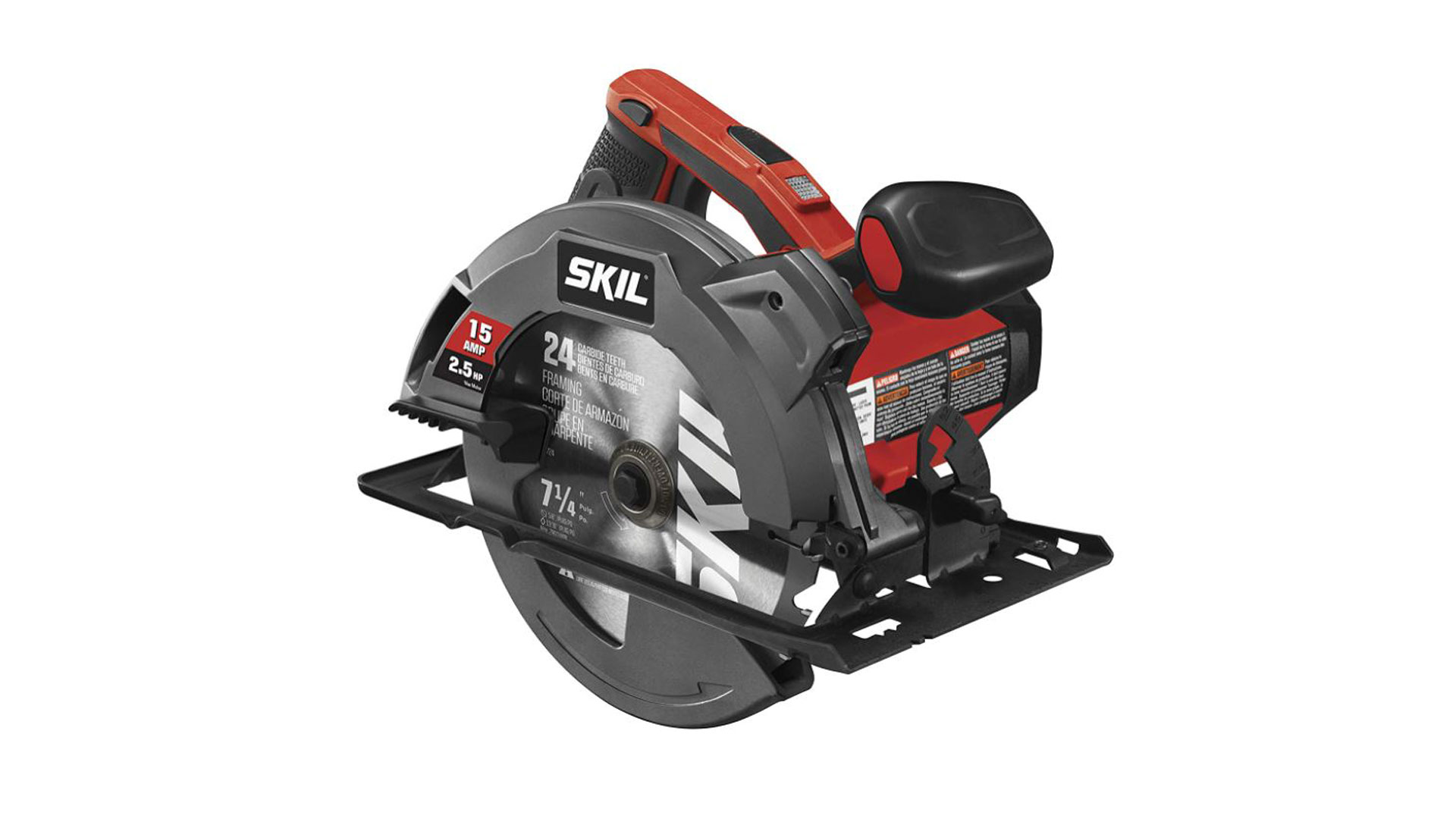
The SKIL 5280-01 is a budget saw that’s lightweight and easy-to-use, with more features than you might expect in a $60 circular saw. It does sit towards the lower-end of the scale power-wise so it’s not the best choice for heavy lumber work, but it can reliably work through DIY jobs. It has some nice extras, like a laser guide and advanced dust blower, for safer and more accurate cutting and the anti-snag lower guard is a nice touch too.
The one-year warranty is pretty limited, many other saws on this list have three or even five-year warranties, however, they also cost more. The SKIL 5280-01 is also missing an electric brake, so the saw won’t stop immediately when you turn it off, but it does have a safety lock. You need both hands to turn it on, but it’s handy for preventing the saw from starting accidentally.
- Read our full SKIL 5280-01 Circular Saw review
5. Black & Decker BDECS300C Circular Saw: Best lightweight circular saw
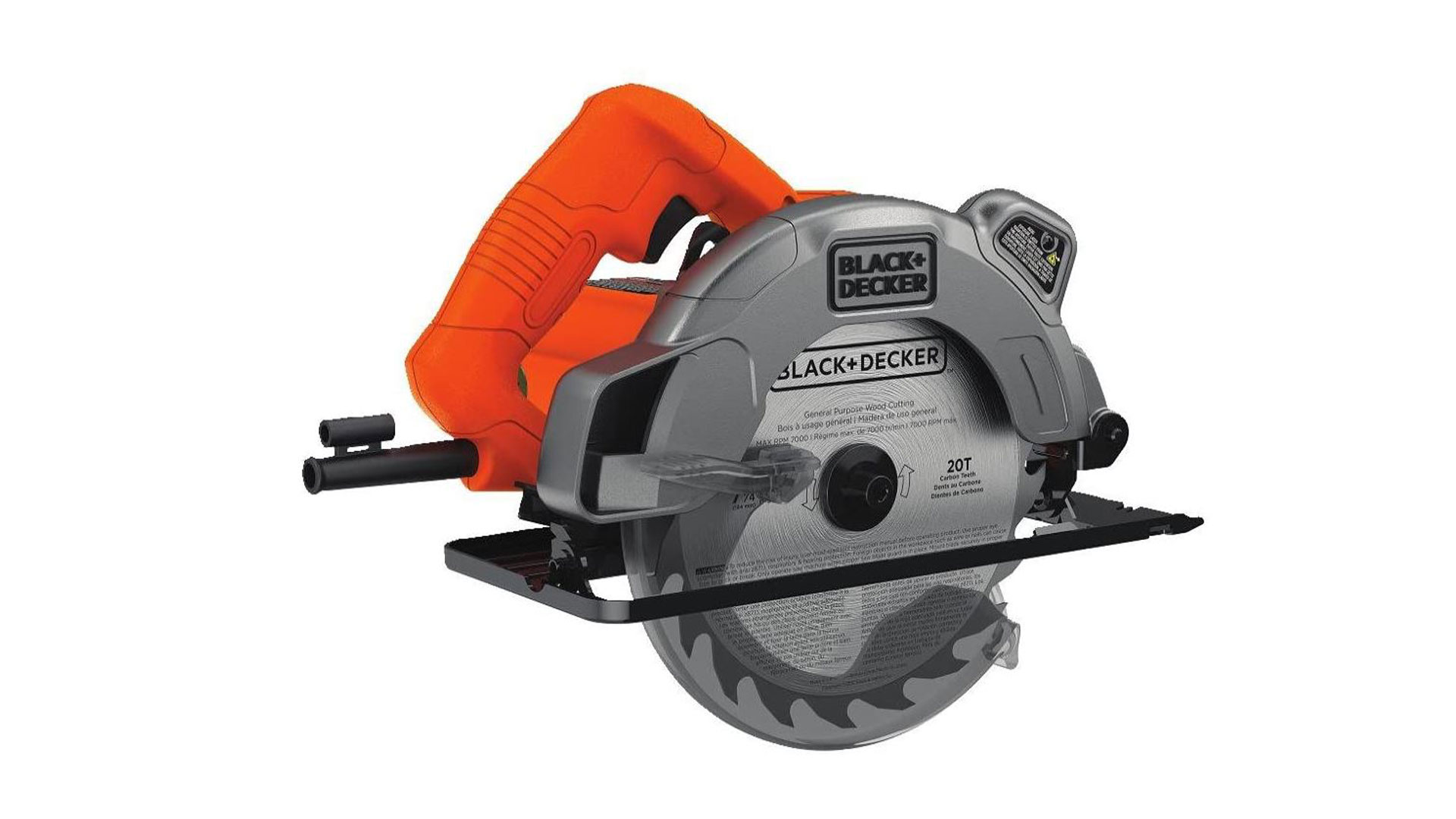
A good all-rounder that won’t break the bank, the Black & Decker BDECS300C Circular Saw is also one of the lightest on the market, weighing in at just 7 pounds. This is particularly useful if you suffer from sore joints or expect to be using the saw on long jobs. It doesn’t pack the power of some of the more professional saws on this list, but at less than half the price of those saws, a little loss of power and fewer features are to be expected.
The 13 amp motor offers enough power for most cutting applications, especially DIY jobs, and the laser guide is a useful feature for more precision cutting. A spindle lock allows for quick and easy blade changes too. This saw doesn’t come with a carry case and upgrading the blade will provide a better performance, but for DIY jobs this saw is more than adequate.
What to look for in a new circular saw
Design
It’s easy to think that sheer power makes the best circular saw. In fact, it’s the smaller things, such as dust chutes, cord length, spindle locks, rip fences, and electric brakes, that make all the difference. A saw can cut at 6,200 RPM, but if it doesn’t include any of these features, it’s going to be a pain to use in the long run. These features enhance the durability and versatility of the tool in a profound way. An accessory as simple as an included carrying case makes the saw more portable, and therefore more useful.
Cutting features
The most important test we conducted was for handling efficiency. Our reviewers used each saw for several hours and compared their experiences to come up with a percentage score. Additionally, they looked at how deeply you can cut at 90- and 45-degree angles. They verified the bevel capacity, the wider the better, so you can cut at whatever degree you want. Positive bevel stops are also an important consideration since they allow you to quickly adjust the shoe for common angles.
How thick can a circular saw cut?
Circular saw blades range from about 6 1/4 inches to 10 1/2 inches in diameter. Generally speaking, the most common blade diameter is 7 1/4 inches, which can cut wood up to 2 inches thick. You can also cut materials up to 2 inches thick with a 6 1/2-inch blade, but 7 1/4 inches is still the most popular.
Still, less common, larger blades may come in handy if you work on projects that involve larger wood beams. Mayer mentioned the thick slabs needed for building tables and benches specifically.
Beyond size, there are other factors to consider as you choose the right blade for the job. Look for masonry blades when you need to cut brick or cinder block and tile-cutting blades for your flooring project. Also, you may need blades made of specialized, durable materials for certain projects. There are high-speed steel blades, which stay sharper longer than normal blades, as well as carbide-tipped blades that stay sharp even longer. Diamond tips can improve the quality of cuts on tiles.
Can I use a circular saw instead of a miter saw?
The answer is yes, but beginners beware. Novices are probably not the best candidate for a solely circular saw project. Circular saws are much more versatile than miter saws, but they also require a bit more skill, at least for certain jobs. Some of the other differences between these two saws are obvious but still worth pointing out, especially if you are buying your first saw of any kind. Here is a breakdown:
Miter Saws
Pros:
- Great for getting accurate angles for things like baseboards and picture frames
- Your hand is not usually as close to the blade
- Limited to about 12-inch-wide cuts, at most, so any project with sheets of plywood is out of the question
- The unit is stationary so the wood has to come to the saw; the saw can't go to the wood. Also, it takes up workshop space
Circular Saws
Pros:
- Can handle longer cuts on large pieces of wood
- Smaller and more portable for packing, which adds versatility
- Less expensive
- Angled cuts are more difficult with a circular saw
- Reputation for leaving splintered edges, though a fine-toothed blade can minimize this
